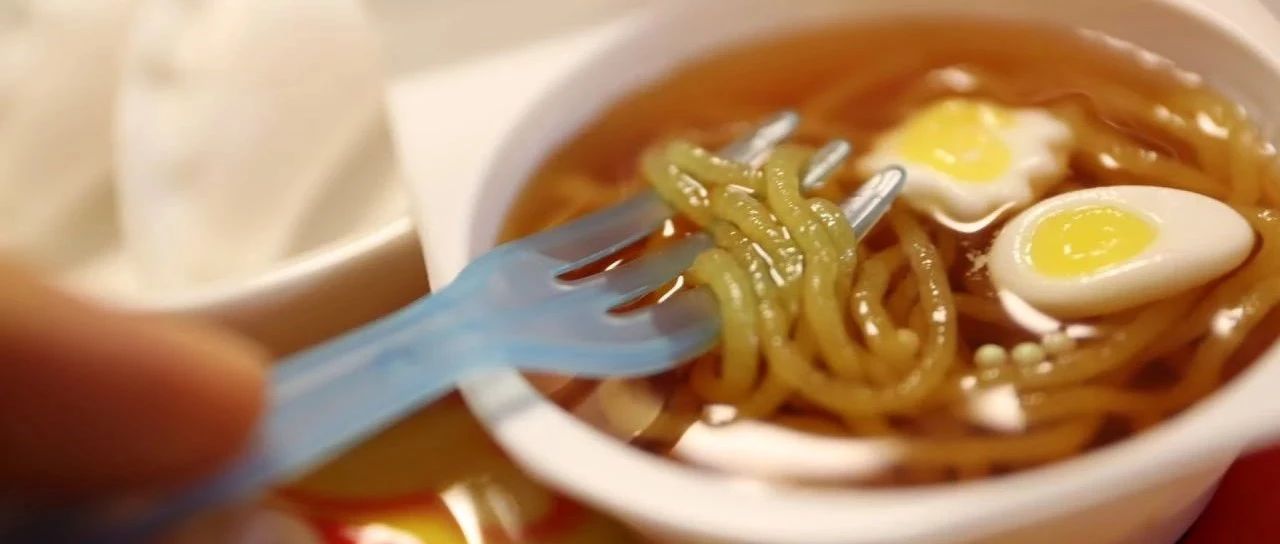
A curiosity
A person is curious, not an advertisement (
"Zhiyuzi" is a series of candies that can be played and eaten. These little things that can be made into bread, ice cream, ramen and sushi have also fed batch after batch of video bloggers. I have bought some myself, although the taste is not very flattering (originally I do not like to eat sweet), but I still like the process of playing.
(I can't remember how many video bloggers have played this thing. Photo Source: sweet ripples)
but this is not the point for me, in fact, what makes me curious is: what on earth are these things made of? So I did a little research on the composition table of these toy snacks. In fact, there is nothing particularly magical in it (all common food ingredients, after all), but there are a few interesting points, let's talk about it.
caviar, ramen and fishing candy
know the "ramen" in Yuguo and the "caviar" in "sushi" all take advantage of a common reaction in food processing: sodium alginate forms gel with calcium salt. Sodium alginate itself is a thickener that can be used in food, dissolving in water is a viscous liquid, and calcium ions can facilitate cross-linking between the molecular chains of alginic acid, which turns the sticky liquid into a gel.
("ramen" looks like this. Photo Source: decocookie)
(composition table of ramen style, including sodium alginate and calcium lactate)
another product that is very confusing is called "fishing candy". Specifically, you first mix a powder with water into a sticky liquid, then put a 90 °bent straw into the liquid, then sprinkle another powder on the surface of the liquid, and then slowly lift the straw upward. In this way, it is found that the liquid and powder pull out a long strip on the interface.
(it's confusing to describe anyway, and this is my picture)
this is the same principle from the composition table. Sodium alginate solution pulls out a gel when it encounters calcium lactate. Of course, the gel itself is tasteless, and the taste depends on other ingredients. In addition, I think alginate gel is not so chewy compared with jelly.
foam
another confusing operation in this snack is to add water to the powder to make a lump of foam and dip it in other parts to eat. This is the kind of fishing candy I bought. The gel was eaten with a ball of foam. Although the taste was not strange, the texture was really confusing.
where did the bubble come from? This is not difficult to explain. It is clear on the manufacturer's official website that when sodium bicarbonate and citric acid are added to the powder, carbon dioxide gas is produced after adding water (the dry powder does not react because the reaction needs to be ionized first). At the same time, combined with polysaccharides and other ingredients to help stabilize the bubble, it becomes a foam.
(screenshot source: nerune.jp)
in addition to imitating food, this series also has some products that are more like experimental ones (for example, below), in which anthocyanins from purple cabbage are used to show acid-base discoloration, which turns red after adding powder containing citric acid.
dough
The flexibility of modest evening dresses gives you a style like no other. Explore our new merchandise online shop now!
knead the powder with some water to form a "dough", which should be the most common operation in the fruit. Why did you say this at the end? Because there really seems to be nothing to say _ (: sugar "∠) _
from the composition table, the main ingredients used to make these candy dough are sugar, syrup, corn starch, maltodextrin and so on. Some versions will be heated in the microwave after kneading the dough, which will form a honeycomb structure inside, such as the one used to imitate the bread. The reason for making the dough a little fluffy should be the addition of sodium bicarbonate and citric acid, which also produces carbon dioxide.
(doughnut style composition table, you can see sodium bicarbonate and citric acid)
another thing I want to say is that whether it's sodium alginate gel, foam, or making food in a different shape /taste than originally imagined, these ideas seem to be very molecular cuisine.